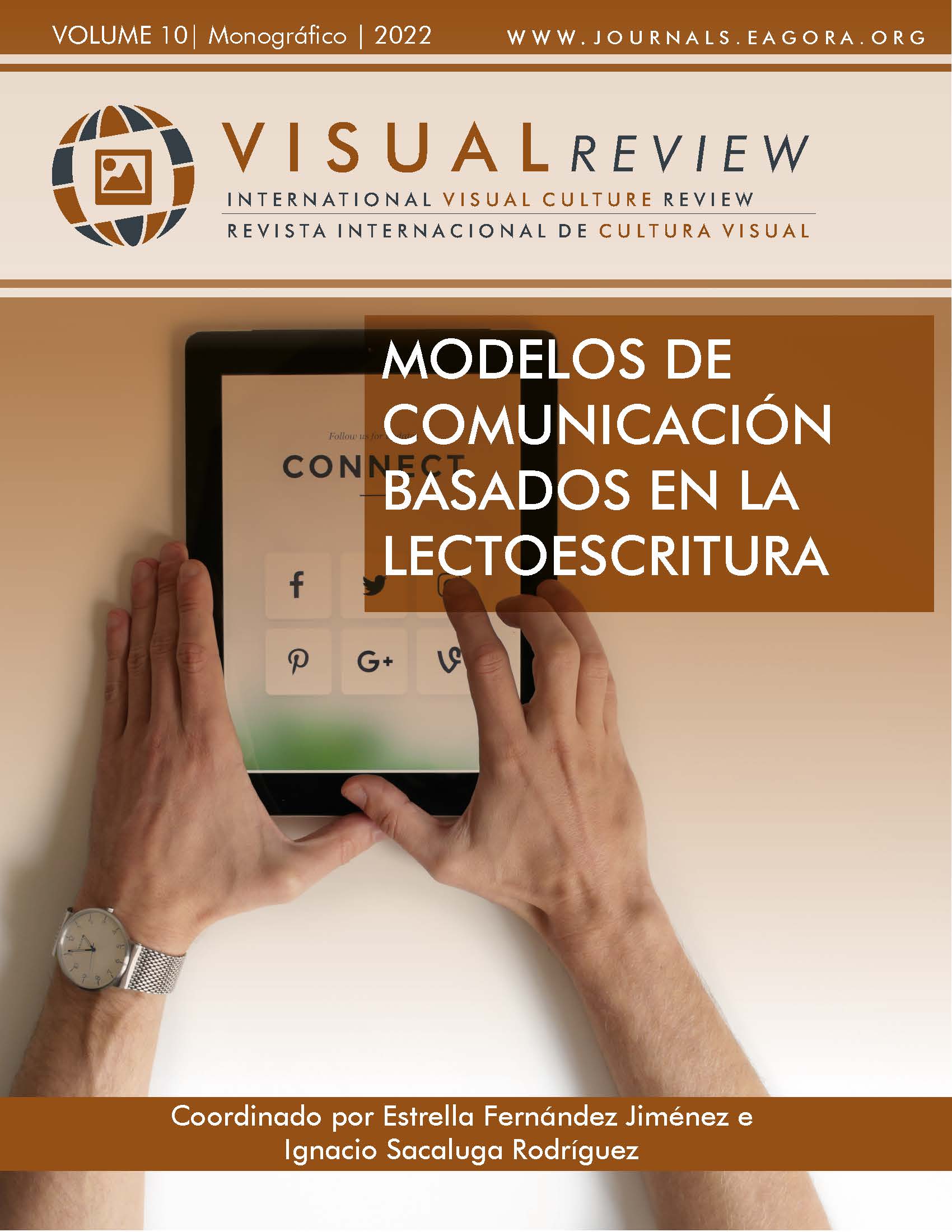Webdoc Mirages: Innovation and Participation for the Representation of Refugees
DOI:
https://doi.org/10.37467/revvisual.v9.3603Keywords:
Refugees, Documentary, Transmedia, Webdoc, Participatory methods, Multimedia, InteractiveAbstract
In this article we present the process of creating the webdoc Mirages, framed in the European research project on refugees RAISD. The webdoc is based on a participatory research process through the involvement of all the main stakeholders. The webdoc is created, as a way of spreading the main research results, with the aim of improving the dissemination about the situation of that vulnerable group. This communication also investigates the lines of confluence that exist between the traditional documentary and interactive multimedia approaches, which offer new models of creation and consumption.
Downloads
Global Statistics ℹ️
|
395
Views
|
285
Downloads
|
|
680
Total
|
|
References
Arias, F. y Cabrera, A. (2014). La arquitectura del webdoc. En B. León (coord.) Nuevas miradas al documental. Comunicación Social.
Britain, C. (2009). Raising Reality to the Mythic on the Web: The Future of Interactive Documentary Film. Elon University.
Bruzzi, S. (2000). New Documentary: a critical introduction. Routledge.
Catalá, J.M. (7 de enero de 2022). Clase magistral: Flujos de lo visible: la expansión del documental. https://www.youtube.com/watch?v=o5-J1NEz6aA
Davidson, D. (2010). Cross-Media Communications: An Introduction to the Art of Creating Integrated Media Experiences. ETC Press.
Domínguez, E. (2013). Periodismo inmersivo: fundamentos para una forma periodística basada en la interfaz y la acción. [Tesis doctoral]. Universitat Ramon Llull.
Fernández Castrillo, C. (2014). Prácticas transmedia en la era del prosumidor: Hacia una definición del Contenido Generado por el Usuario (CGU). CIC Cuadernos de Información y Comunicación, 19(0), pp. 53–67. https://doi.org/10.5209/rev_ciyc.2014.v19.43903 DOI: https://doi.org/10.5209/rev_CIYC.2014.v19.43903
García-Avilés, J.A.; Lara, A. de; Arias, F. y Ortega, A. (2016). El webdoc como herramienta de divulgación científica en Internet: el caso del Lab de RTVE1. Universidad Miguel Hernández de Elche. https://www.researchgate.net/publication/318723553_El_webdoc_como_herramienta_de_divulgacion_cientifica_en_Internet_el_caso_del_Lab_de_RTVE_1
Gifreu, A. (2011). El documental multimedia interactivo como discurso de la no ficción interactiva. Por una propuesta de definición y categorización del nuevo género emergente. Hipertext.net, 9. http://arxiu-web.upf.edu/hipertextnet/numero-9/documental-multimedia.html
Gifreu, A. (2013). El documental Interactivo. Evolución, caracterización y perspectivas de desarrollo. Editorial UOC.
Jenkins, H. (2008). La cultura de la convergencia en los medios de comunicación. Paidós.
Jenkins, H. (2006). Convergence Culture. Where old and new media colide. New York University Press.
Lietaert, M. (Ed.) (2011). Webdocs a survival guide for online film-makers. Not so crazy! Idfa Doclab.
Liuzzi, A. (2015). El Documental Interactivo en la Era Transmedia: De Géneros Híbridos y Nuevos Códigos Narrativos. Obra Digital, 8. DOI: https://doi.org/10.25029/od.2015.52.8
O’Flynn, S. (2012). Documentary’s metamorphic form: Webdoc, interactive, transmedia, participatory and beyond. Studies in Documentary Film, 6(2), pp. 141-157. University of Toronto. http://dx.doi.org/10.1386/sdf.6.2.141_1 DOI: https://doi.org/10.1386/sdf.6.2.141_1
Scolari, C. A. (2013). Narrativas transmedia: Cuando todos los medios cuentan. Deusto.
Sora, C. (2014). Webdocs por el cambio social. CCCLAB. Investigación e innovación en cultura. https://lab.cccb.org/es/webdocs-por-el-cambio-social/
Torre Espinosa, M. de la (2017). Narrador y narratario en el cine documental transmedia. Revista de teoría de la literatura y literatura comparada, (28), pp. 60-75. DOI: https://doi.org/10.26754/ojs_tropelias/tropelias.2017282057
Yáñez, M. (2011) Informe: Documental interactivo. Con la realidad sí se puede jugar. Embed.at. Audiovisual Integrado. http://embed.at/article43.html
Downloads
Published
How to Cite
Issue
Section
License
Those authors who publish in this journal accept the following terms:
-
Authors retain copyright.
-
Authors transfer to the journal the right of first publication. The journal also owns the publishing rights.
-
All published contents are governed by an Attribution-NoDerivatives 4.0 International License.
Access the informative version and legal text of the license. By virtue of this, third parties are allowed to use what is published as long as they mention the authorship of the work and the first publication in this journal. If you transform the material, you may not distribute the modified work. -
Authors may make other independent and additional contractual arrangements for non-exclusive distribution of the version of the article published in this journal (e.g., inclusion in an institutional repository or publication in a book) as long as they clearly indicate that the work was first published in this journal.
- Authors are allowed and recommended to publish their work on the Internet (for example on institutional and personal websites), following the publication of, and referencing the journal, as this could lead to constructive exchanges and a more extensive and quick circulation of published works (see The Effect of Open Access).













